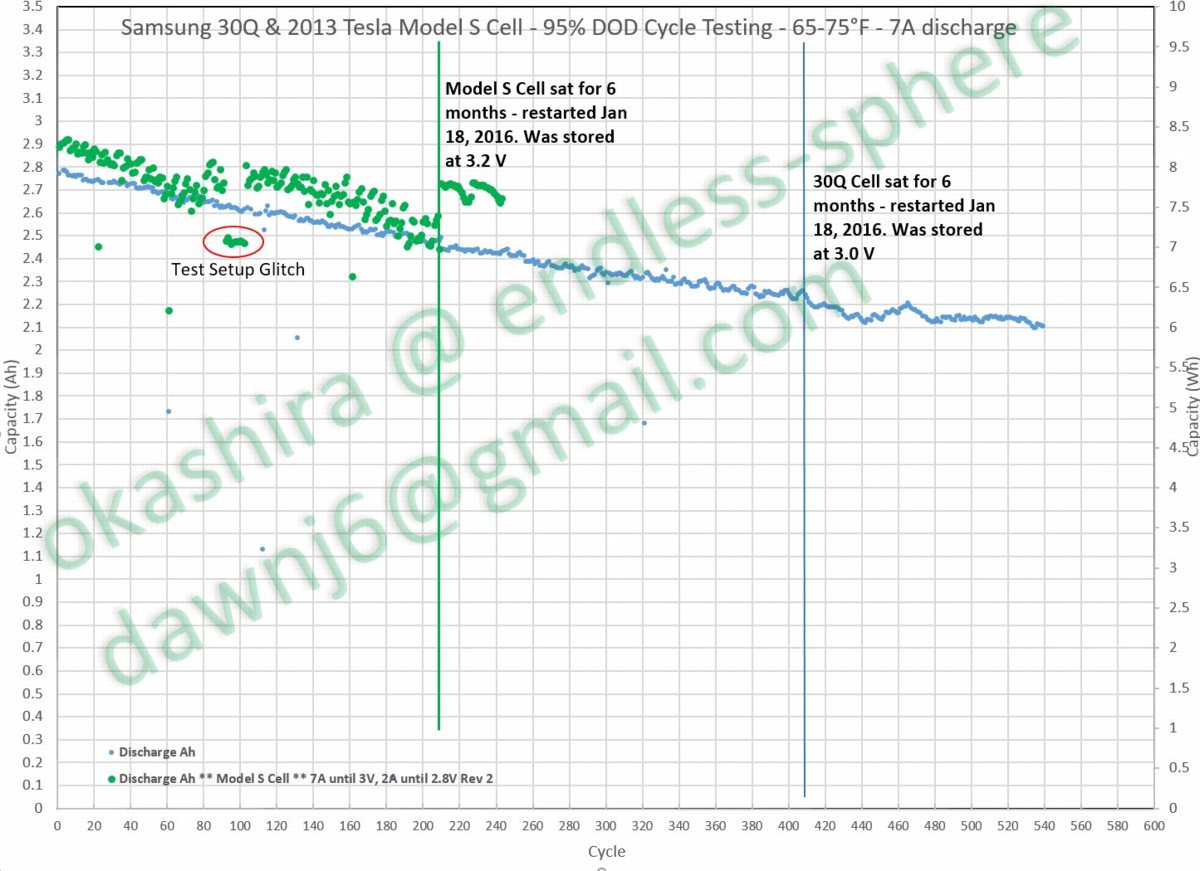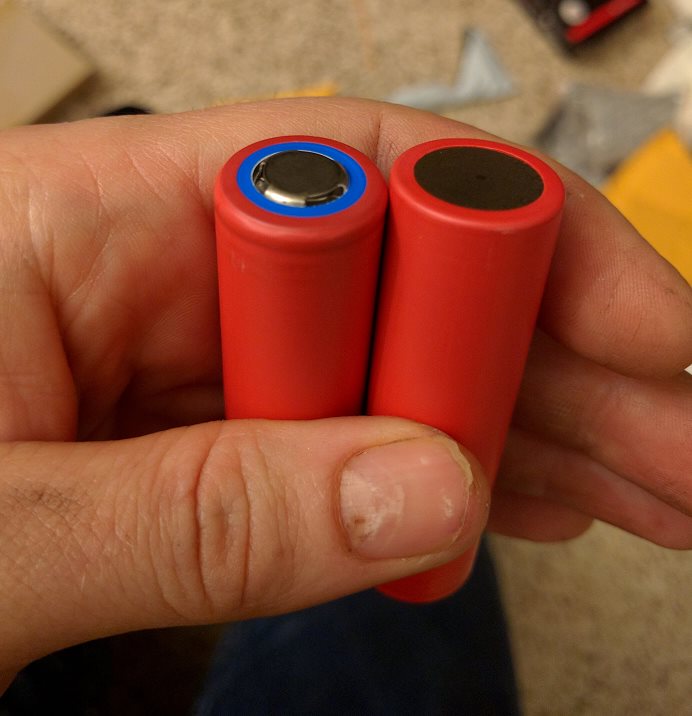hillzofvalp
100 kW
Could someone please do a comparison of the Panny BE to the 30Q?
hillzofvalp said:Could someone please do a comparison of the Panny BE to the 30Q?
Hillhater said:Have you compared 18650 voltage sag to some decent RC Lipos ?
I suspect you will be losing some voltage on a like for like pack.
bellfador said:VTC5A has low DC Internal Resistance but lipo has less (approximately 10 mOhm/Ah).
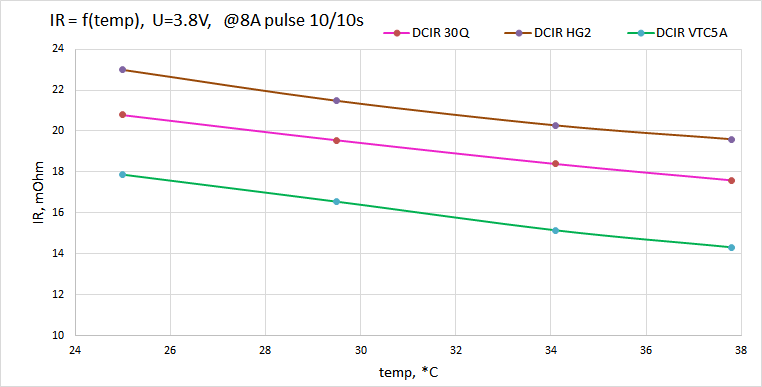
bellfador said:The charger measure only AC internal resistence and also the measurement is inaccurately. In your case the voltage sag is linked to DC internal resistence and DCIR > ACIR.
Your calculation is wrong . 8 mOhm for 5Ah is equal to 40 mOhm/Ah.
Prett sure you got the units messed up there.bellfador said:Easy calcs... 3S 1300 mAh turnigy nano 25-50C weight 139g, or 46.3g per cell. Dc internal resistence will be approximaly 7.7 mOhm or 166 mOhm /g and 37 mOhm/Wh. VTC5A have 377 mOhm /g and 152 mOhm/ Wh. Soon I will make a test on some lipo and I can tell with sure.
oneoone said:SO for someone with limited knowledge of cells, would this be a good cell to build a battery pack out of? I am looking at purchasing a small 14S6P triangle frame pack from em3ev made with 30q's. Is this a good choice for a bbshd?

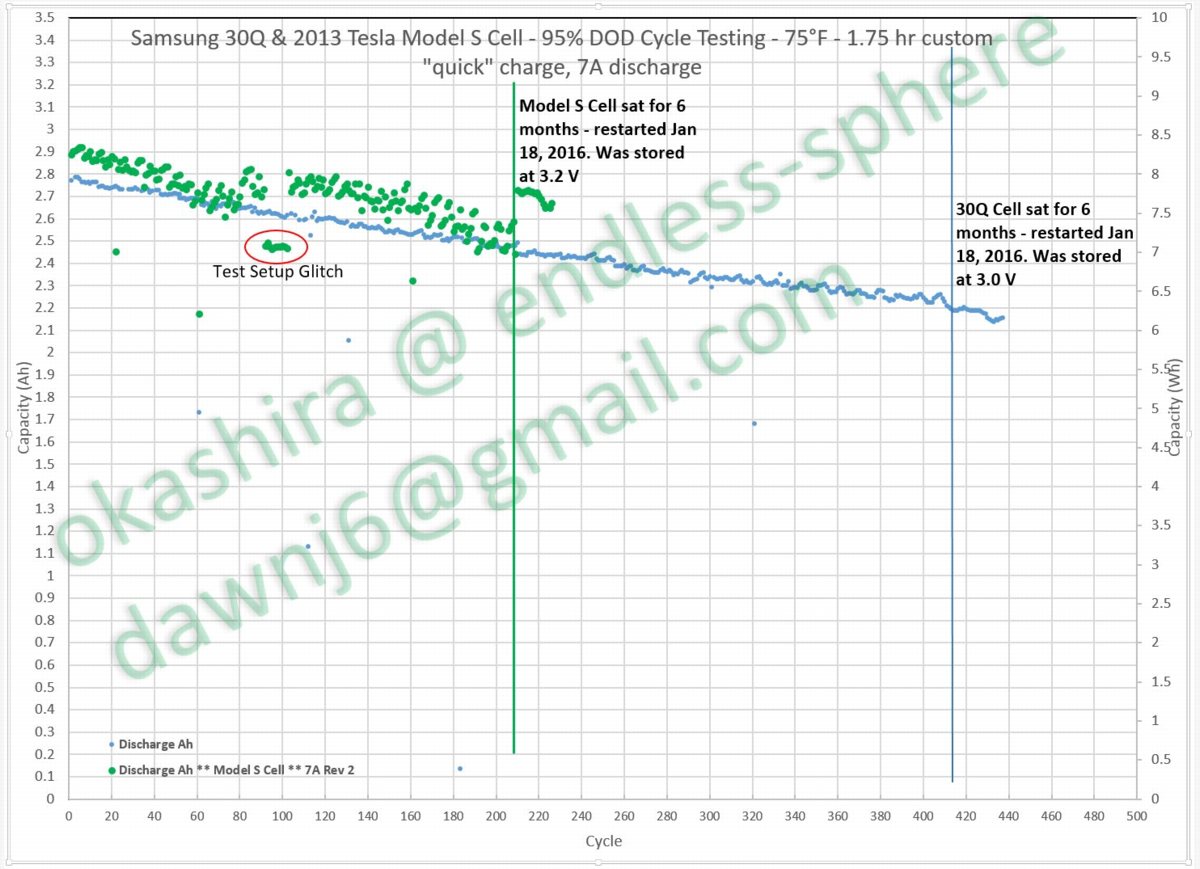
okashira said:Added all Model S Cell data to date.
I can offer no explanation for the strange behavior of the Model S cell. It seems to have actually picked up capacity after storage for six months at 3.2V. The data is real and I have verified it's good.
I am going to double check and make sure I didn't hook up the wrong cell tomorrow....

Wow that is really terrible cycle life on your full DOD test.Pajda said:okashira said:Added all Model S Cell data to date.
I can offer no explanation for the strange behavior of the Model S cell. It seems to have actually picked up capacity after storage for six months at 3.2V. The data is real and I have verified it's good.
I am going to double check and make sure I didn't hook up the wrong cell tomorrow....
I have no scientific explanation too, but this seems to be a common behavior of Li-Ion cells. So I am only somewhat confused about Samsung cell, that it did not picked up some capacity as well.
I have noticed during cycle life tests of Li-Ion cells that the rest time between CHG and DCHG plays significant role in cycle life too. Even couple of hours rest time instead of standard 10-15min regain a few percent of usable capacity. It can be seen on my graph below. I am using 20 cycle tests, so the small peaks shows influence of another couple of minutes to hours of rest time between starting next 20 cycles. And after a 390 cycle you can see influence of ca 12 days rest time.
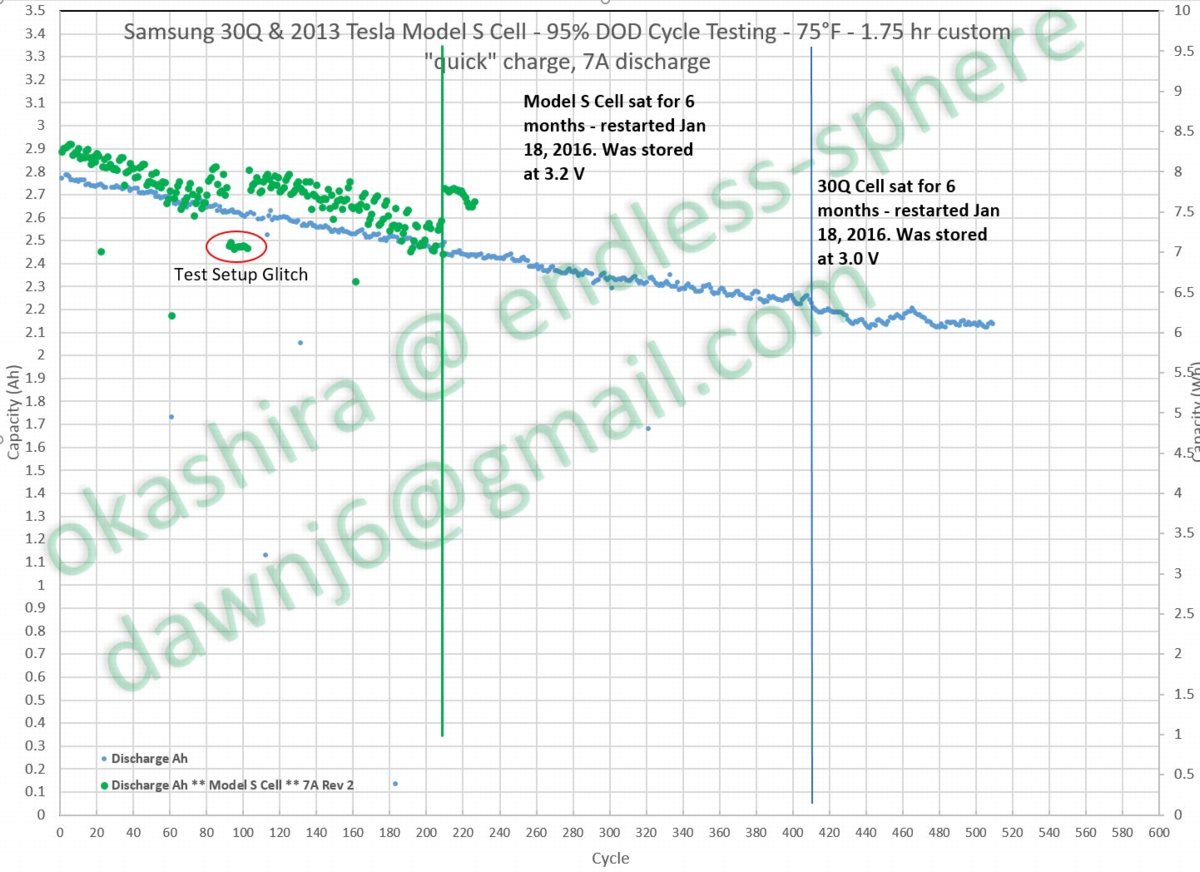
Mostly due to warming. When I restarted testing, temperature was about 64 ambient. Recently I fixed the heater in the house and we had a heat wave. I suspect it will start falling againridethelightning said:gee. the 30q seems to have flattened off nicely.
so, does that mean that running the cycles at low temp was actually accelerating permenent capacity loss?okashira said:Mostly due to warming. When I restarted testing, temperature was about 64 ambient. Recently I fixed the heater in the house and we had a heat wave. I suspect it will start falling againridethelightning said:gee. the 30q seems to have flattened off nicely.
Guess I should revise the "75°F" at the top of the chart.
ridethelightning said:so, does that mean that running the cycles at low temp was actually accelerating permenent capacity loss?okashira said:Mostly due to warming. When I restarted testing, temperature was about 64 ambient. Recently I fixed the heater in the house and we had a heat wave. I suspect it will start falling againridethelightning said:gee. the 30q seems to have flattened off nicely.
Guess I should revise the "75°F" at the top of the chart.
cause now they seem to be sticking to a line that suggests that the capacity loss in the first tests has stopped altogether..but neither has the cell gained capacity much at the new higher temp.
